15 Best Vegetables That Grow Underground Top Picks For 2024
Underground veggies have a secret life, and it’s not just about hiding from gardeners! They’re actually packing on the nutrients and survival skills to become the superheroes of our diet. Carrots can see in the dark because they’ve been bulking up underground, while potatoes are supercharged with energy thanks to their subterranean snacking habits. It’s all about harnessing the power of the earth, which keeps them moist, cool, and fed.
Next time you munch on a beet or slice up some sweet potato, remember these veggies have been working hard beneath your feet, building up their strength to give you a health boost. The underground world is full of hidden treasures, from the visionaries like carrots to the comfort food champions like potatoes. Each root veggie has its unique strengths and benefits, waiting to be unearthed and enjoyed.
Understanding Underground Vegetables
What’s the Deal with Vegetables That Grow Underground?
Root vegetables are the unsung heroes of the plant world. They’ve evolved a unique survival strategy that involves staying low-key under the soil, rather than growing above ground like many other veggies. This lifestyle has its advantages – it’s cooler, and they’re protected from pests and harsh weather. Root veggies are essentially preppers, stockpiling nutrients in their roots to keep themselves – and eventually us – going strong.
These underground dwellers have some impressive nutritional profiles too. Carrots, for instance, are rich in vitamin A and potassium, which helps keep our eyes sharp and hearts happy. Beets are a great source of fiber and folate, good for our heart health and keeping us moving. And sweet potatoes? They’re packed with vitamins A and C, fighting off germs and keeping our skin healthy.
Not all root systems are created equal, however.
Taproots are long and deep, like carrots on a mission to find water. Tuberous roots, on the other hand, are chunky storage units that hoard starch like there’s no tomorrow – potatoes being the poster child for this type of root.
Each type of root has its own way of doing things, but they all share the goal of keeping their plant fed and watered.
So next time you pull up a radish or dig out a potato, give a little nod to these clever veggies that have got it all figured out – from staying cool to packing in the nutrients.
The Rooted Treasures: A Closer Look
While above-ground veggies get plenty of attention, it’s time to shine a light on their underground counterparts. These hidden gems have unique personalities, bursting with nutrients and flavor, making them culinary rockstars in their own right. Let’s dive into what makes each of these subterranean superstars stand out in kitchens worldwide.
Carrots: The Visionary Snack
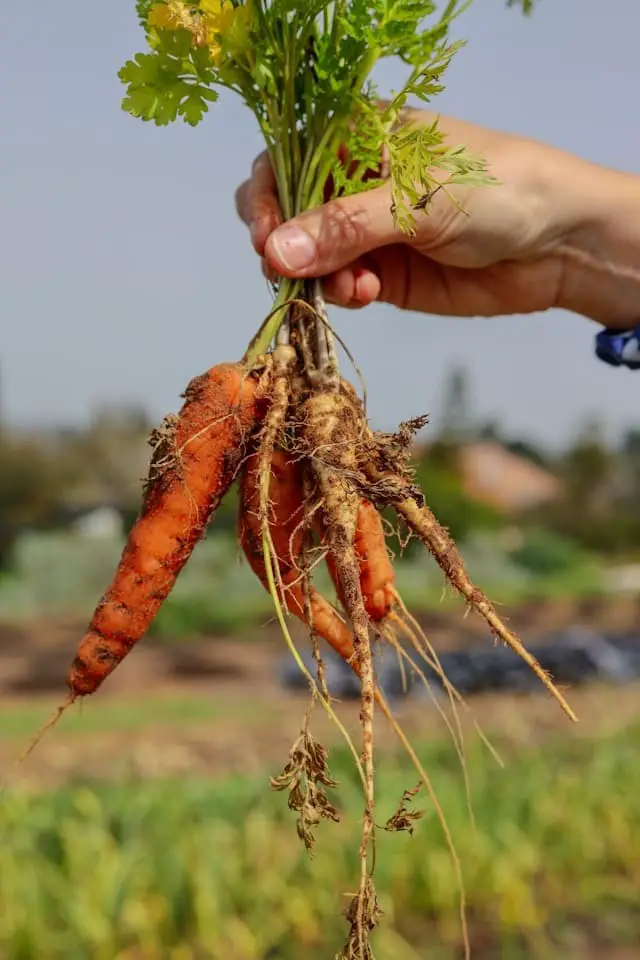
Nature’s candy, crunchy power sticks grow deep into the soil to absorb an abundance of nutrients. These nutrient-rich treats are packed with Vitamin A, supporting healthy vision and immune function. Enjoy them unprocessed as a satisfying snack, add them to salads for a burst of flavor, or drizzle with a sweet glaze for a delightful side dish.
Potatoes: The Comfort Food Champ
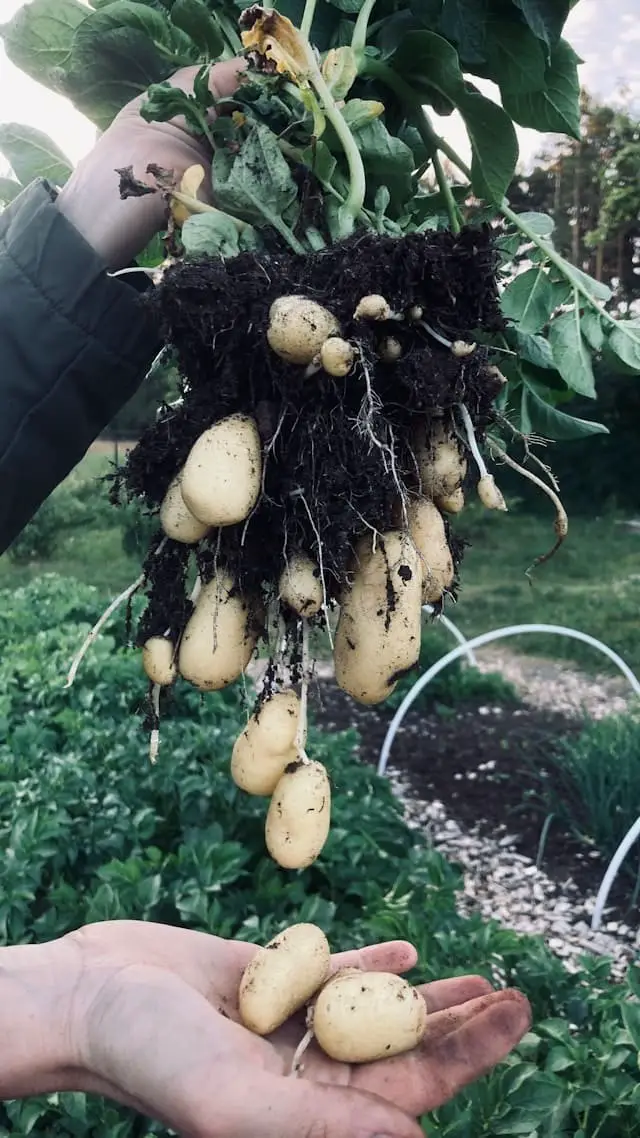
Potatoes – the unsung heroes of the culinary world. Behind their humble appearance lies an extraordinary ability to energize our bodies and satisfy our cravings. Not only are they a rich source of potassium, which plays a vital role in supporting heart health, but they’re also incredibly versatile. Whether boiled, mashed, or added to a hearty stew, potatoes bring a depth of flavor and texture that’s hard to match. And let’s not forget their crispy, golden-brown potential when cooked in the oven.
It’s no wonder they’re a staple in kitchens around the world.
Beets: The Sweet Earthy Gem
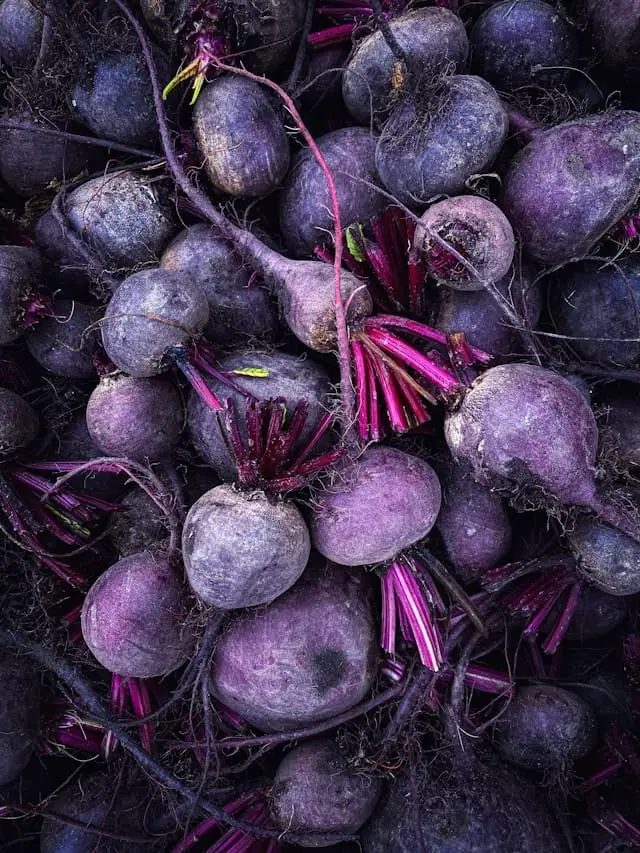
Indulge in the rich flavors and numerous benefits of these stunning burgundy-colored delights. Not only do they delight the palate with their earthy sweetness, but they also boast an impressive array of nutritional advantages. Packed with fiber, these treasures are a great way to support healthy blood pressure levels. But that’s not all – their versatility in the kitchen is simply astounding.
Roast them to perfection for a hearty side dish, juice them up for a refreshing health boost, or add sliced raw portions to your favorite salads for a burst of flavor and texture.
Sweet Potatoes: The Vitamin A Hero

These vibrant tubers pack more than just a sweet surprise. They’re true nutritional powerhouses, boasting an impressive array of health benefits. For starters, they’re a rich source of Vitamin A, providing a significant boost to overall well-being. Additionally, they’re packed with antioxidants, making them a valuable addition to any meal. But what really sets them apart is their versatility in the kitchen.
Whether you choose to roast them for a crispy snack, transform them into crispy fries, or bake them into a sweet and savory pie, these humble spuds are sure to delight.
Radishes: The Peppery Crunch
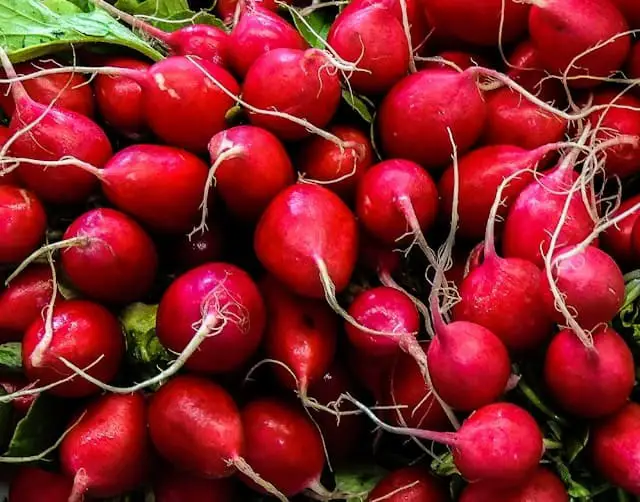
Radishes may be small in size, but they more than make up for it with their bold flavor and impressive nutritional profile. These tiny roots are a powerhouse of health benefits, boasting high levels of Vitamin C that can help support the immune system. When it comes to culinary uses, radishes are incredibly versatile. They add a delightful crunch and spicy kick when pickled, bring a fresh and peppery bite to salads, and make for a zesty and eye-catching garnish.
Whether you’re looking to spice up your meals or simply want to experience the nutritional benefits of this underrated veggie, radishes are definitely worth getting familiar with.
Onions: The Flavor Foundation
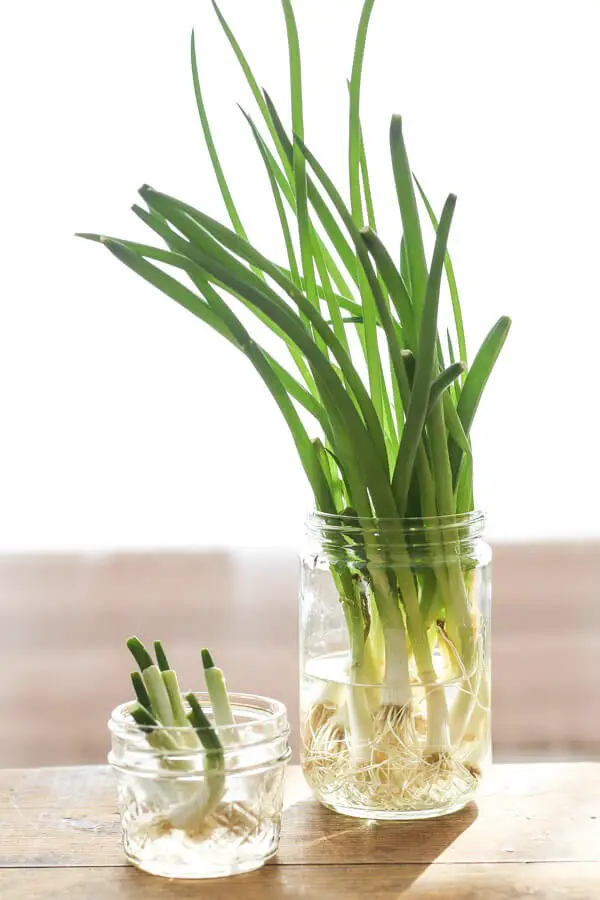
In the culinary world, there’s a humble ingredient that plays a crucial role in setting the stage for a wide variety of dishes. This unsung hero is not only a flavor powerhouse but also packs a nutritional punch. Rich in nutrients, it can help boost bone density and possesses anti-inflammatory properties, making it an excellent addition to any meal. When it comes to cooking techniques, sautéing is a popular method for bringing out its natural flavors.
Whether you’re starting off a hearty stew or adding depth to a savory sauce, this versatile ingredient is the perfect foundation for any culinary creation.
Garlic: The Aromatic Powerhouse

With a powerful punch of flavor packed into small, unassuming cloves, this culinary superstar is capable of elevating even the most mundane dishes to new heights. But its impressive impact doesn’t stop there – it’s also renowned for its impressive nutritional profile, boasting a range of benefits that can help support heart health and give your immune system a boost.
As a result, it’s a staple in kitchens around the world, with uses ranging from the quick stir-fries to the slow-cooked marinades that bring out its deep, rich flavor.
Turnips: The Versatile Root
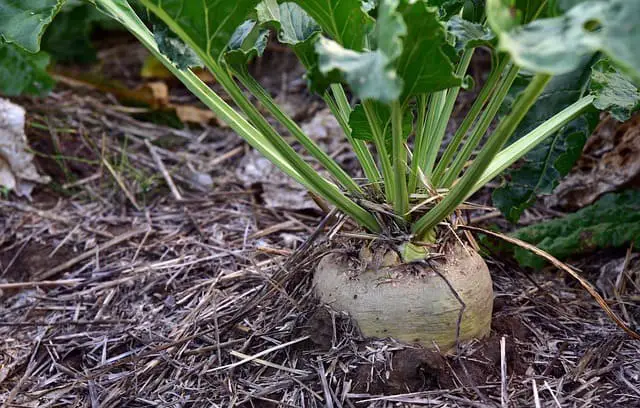
This often underappreciated ingredient boasts a unique flavor profile that is both pleasantly peppery and subtly sweet. Beyond its tantalizing taste, it also packs a nutritional punch by being rich in fiber and Vitamin C. When it comes to culinary applications, this versatile veggie can be roasted to bring out its natural sweetness, mashed for a comforting side dish, or added to hearty stews to add an earthy depth that elevates the entire dish.
Parsnips: The Sweet, Spicy Root
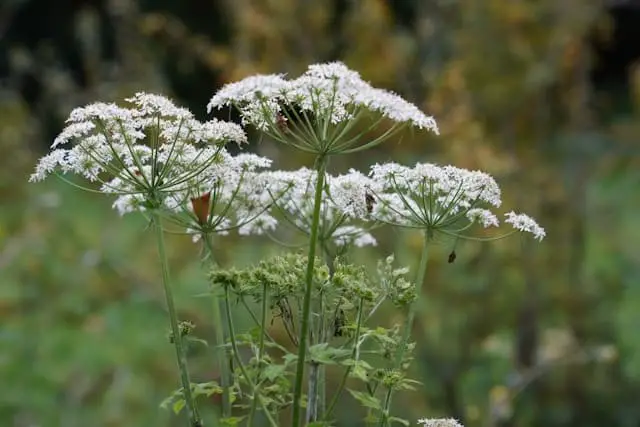
The humble parsnip may resemble a carrot in appearance, but its sweet, spicy flavor sets it apart as a true cold-weather comfort food. Not only is this root vegetable a great source of fiber and vitamin C, making it a nutritious addition to any meal, but it’s also incredibly versatile. Roasting brings out the best in parsnips, while pureeing them into soups adds a rich, creamy texture that’s sure to become a new favorite.
Ginger: The Zesty Healer

Ginger’s fiery personality adds a burst of flavor to dishes while simultaneously calming the digestive system. Its impressive nutritional profile is equally noteworthy, boasting potent anti-nausea and anti-inflammatory properties that have garnered widespread recognition. This versatile root is commonly utilized in various culinary applications, including grating it into stir-fries for an instant flavor boost, brewing it into a soothing tea, or incorporating it into sweet treats through baking.
Turmeric: The Golden Spice
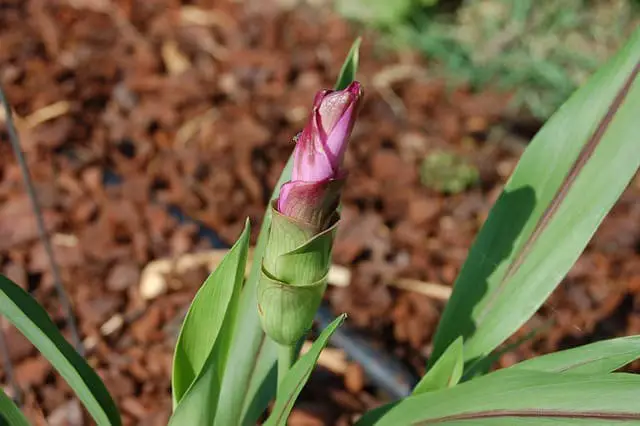
The humble turmeric root is a vibrant yellow and packed with an impressive array of health benefits, earning it the nickname ‘the spice of life’. Its potent anti-inflammatory and antioxidant properties make it a valuable addition to any diet.
In the culinary world, turmeric plays a starring role in adding warmth and depth to dishes like curry.
But its uses extend far beyond the kitchen – it’s also commonly added to smoothies for an extra boost of nutrition or used to give plain rice a flavorful twist.
Yams: The Starchy Staple
Yams are more than just a sweet potato’s cousin – they’re a starchy, sweet, and nutritious root vegetable that deserves attention. One of their standout features is their impressive nutritional profile, which includes being a good source of fiber, potassium, and manganese. When it comes to cooking, yams are incredibly versatile and can be boiled, baked, or fried into a variety of delicious treats.
Jerusalem Artichokes (Sunchokes): The Nutty Tuber

This enigmatic root, unrelated to Jerusalem artichokes and not typically associated with nuts, packs a nutritional punch. Rich in inulin, a type of prebiotic fiber, it’s an excellent addition to any gut health regimen. While its earthy sweetness lends itself well to roasting, bringing out its natural flavors, it can also be sliced thinly for added crunch in salads.
Rutabagas: The Swede Surprise
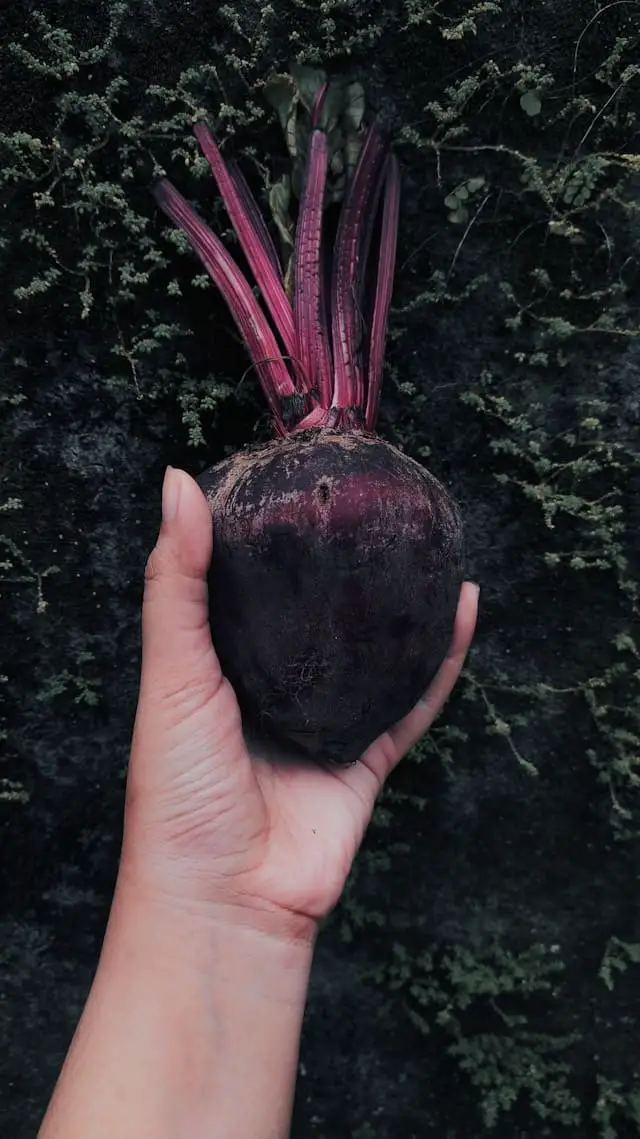
Rutabagas, a unique hybrid of turnips and cabbages, boast a distinctively sweet and earthy flavor profile. From a nutritional standpoint, they are an excellent source of dietary fiber and Vitamin C, making them a valuable addition to a healthy diet.
In terms of culinary applications, rutabagas can be prepared in a variety of ways to bring out their natural sweetness.
They can be mashed and served as a side dish, roasted to bring out their caramelized flavors, or added to hearty winter stews and soups for a burst of nutrients and flavor.
Daikon Radish: The Winter White
Daikon radishes are often overlooked in favor of their more popular cousins, the cherry belle or white icicle varieties. However, this mild and slightly sweet root vegetable has its own unique charm. With a nutritional profile that’s low in calories but high in digestive enzymes, daikon is an excellent addition to any meal. Whether you’re looking for a crunchy snack, a flavorful salad topping, or a key ingredient in Asian cuisine, daikon radishes are a versatile and nutritious choice.
When it comes to culinary uses, daikons can be pickled and served as a tangy condiment, grated into salads for a burst of fresh flavor, or used in a variety of Asian dishes for their signature crunch. And with its high fiber content, this veggie is also an excellent digestive aid, making it a great addition to soups, stews, and sautéed dishes.
Here’s a quick glance at some of the nutritional highlights of daikon radishes:* High in digestive enzymes* Low in calories* Rich in fiber and vitamins C and KAnd here’s a peek at how other popular veggies stack up nutritionally:* Carrots: high in vitamin A, great for snacks and salads* Potatoes: rich in potassium, perfect for mashing or baking* Radishes: like daikons, they’re high in vitamin C and make a great pickled snack* Onions: support bone health with their high levels of calcium and magnesium* Garlic: boosts heart health and immunity with its sulfur compounds* Turnips: rich in fiber and vitamins C and K, perfect for roasting or mashing* Parsnips: like daikons, they’re high in fiber and vitamins C and K, great roasted or mashed* Ginger: anti-inflammatory properties make it a great addition to stir-fries and tea* Turmeric: also anti-inflammatory, adds a bright yellow color to curries and smoothies* Yams: rich in fiber and potassium, perfect for boiling, baking, or frying* Jerusalem artichokes: high in inulin, a prebiotic that supports gut health* Rutabagas: like daikons, they’re high in fiber and vitamins C and K, great mashed or roasted
Cultivation Tips for Underground Vegetables
Eager to cultivate a thriving underground garden? Start strong with these tips for growing exceptional root vegetables, straight from the ground up.
Best Seasons to Plant
When cultivating an underground crop, timing plays a crucial role. To achieve optimal growth, it’s essential to consider the specific needs of each plant type. Here’s a breakdown of the ideal planting times for various crops:
Spring is the perfect time to sow carrots, beets, and radishes, which thrive in cool temperatures. Make sure to get them in the ground just as the frost has lifted.
Summer is the season for sweet potatoes and yams, which require warm soil to grow.
Wait until the temperature matches that of a sunny beach day before planting these heat-loving varieties.
Fall is an excellent time to plant garlic and onions, which prefer cooler temperatures. Plant them when the air starts to crisp up, and they’ll be ready to reward you with next year’s harvest.
Soil Prep and Maintenance: The Dirt on Dirt
When it comes to creating the perfect underground abode, your root veggies are very particular about the terrain they inhabit. They thrive in loose, well-draining soil that allows them to stretch and spread out comfortably. To create this ideal environment, consider the following steps:Firstly, break up the compacted soil to provide ample space for your veggies’ roots to grow. This will give them the freedom to expand and receive the necessary nutrients.
Next, enrich the soil with a nutrient-rich compost or aged manure. This addition will not only improve the overall health of the soil but also supply essential vitamins and minerals to your root veggies. Finally, keep the soil clean by removing any weeds that may be competing for resources. By doing so, you’ll ensure that your veggies receive the necessary nutrients and attention, allowing them to grow strong and healthy.
Watering and Care: The Drink and Tuck-In Routine
When it comes to watering your veggies, consistency is crucial. Aim for a moist but not soggy soil, much like a wrung-out sponge. Start with a morning ritual – water your plants before the sun becomes too intense. This allows them to absorb the moisture without overheating. Additionally, consider adding a layer of mulch to retain moisture and regulate temperature. Think of it as wrapping your veggies in a cozy blanket, ensuring they thrive under optimal conditions.
From Garden to Table: Harvesting and Preparing
As your underground vegetables near harvest readiness, excitement builds! To ensure optimal flavor and nutritional value, it’s essential to handle them with care from soil to plate. This involves selecting the perfect specimens, storing them correctly, and cooking techniques that preserve their natural goodness.
Knowing When to Harvest
Timing is crucial in harvesting various vegetables. You don’t want to wait too long or pick them too early. To determine the perfect moment, observe the following signs for each type:Carrots and Beets: When they start pushing through the soil, checking if the conditions are right for harvest, it’s time to bring them in. Look for a significant portion of their shoulders exposed. Potatoes and Sweet Potatoes: Wait until the foliage has turned brown and started to wither away.
This indicates they’ve reached maturity and are ready to be dug up. Onions and Garlic: These plants give you a clear signal when their tops begin to droop, as if bowing out of exhaustion. It’s then time to remove them from the soil. Radishes: With their rapid growth rate, radishes are ready when they feel firm to the touch and their tops fit snugly around the roots.
Storing for Freshness
When you’ve harvested your veggies from the earth, it’s crucial to store them in a way that preserves their freshness. Some veggies thrive in cool, dark conditions, while others prefer the chill of the fridge. Here’s how to keep yours fresh:
For potatoes, onions, and garlic, think of a secret club – they like it dark and shaded.
Carrots, beets, and radishes, on the other hand, prefer the crisper drawer in your fridge, where they’ll stay crisp.
When wrapping them up, remember to breathe some life into their packaging. Use paper bags or perforated plastic bags to give them a little air.
Prep and Cooking: Keeping the Good Stuff In
Unlock the full flavor potential of your underground treasures by cooking them to perfection. Here’s a breakdown of the best methods for each:Carrots, beets, and sweet potatoes are naturally sweet and benefit from roasting, which brings out their natural sweetness. Simply toss with oil and seasoning, then roast in a hot oven. Potatoes and turnips, on the other hand, are perfect for boiling. To retain nutrients and flavor, keep the skin on when cooking.
Radishes and carrots can be enjoyed raw, sliced thinly and tossed into salads for a peppery or sweet crunch. When it comes to storage and cooking, consider this quick guide:* Harvest: Shoulders peeking (carrots), foliage dies back (potatoes and turnips), tops take a bow (onions), and tops droop (garlic).* Store: Fridge for carrots, potatoes, and radishes; cool and dark for sweet potatoes.
* Cook: Roast or raw for carrots, boil with skin on for potatoes and turnips, sauté or raw for onions and garlic, roast or mince for beets.
The Environmental Impact
While exploring the green side of things, cultivating underground vegetables holds significance that goes beyond just sourcing fresh produce. It’s a crucial step towards nurturing a healthier planet. Let’s delve into how these subterranean superstars are contributing to Mother Earth’s well-being.
Sustainability of Growing Root Vegetables
Root vegetables are the epitome of low-maintenance gardening companions. They’re easy-going, requiring only decent soil, a moderate amount of water, and they’ll thrive. This laid-back nature makes them shining examples of sustainability. Not only do they need less water compared to their leafy counterparts, but they also promote local growth, reducing the demand for long-distance transportation and its associated environmental impact.
The result is fresher produce on your plate with a significantly reduced carbon footprint. Additionally, these underground vegetables can be stored for months without compromising their nutritional value or taste, allowing us to reduce food waste and cut down on unnecessary grocery trips. Storing carrots and potatoes over the winter is a tried-and-true strategy that still proves effective in minimizing waste.
Soil Health and Biodiversity
As we delve into the world of root vegetables, let’s give credit where credit is due – these underground heroes are quietly working their magic in the soil. By breaking up compacted soil and allowing water and air to penetrate, they’re essentially small-scale farmers, tilling the earth with precision. This unassuming labor helps create a healthy environment for future plant growth. But there’s more to the story than just individual vegetable superpowers.
When we plant a diverse array of root vegetables, we’re inadvertently hosting an underground party – and everyone’s invited! Different plants attract different beneficial insects and microorganisms, fostering a thriving ecosystem that keeps soil in top shape. This biodiversity can even lead to improved crop yields, making it a win-win situation for both our plates and the planet. As we navigate this veggie world, let’s not forget the added benefits of each root vegetable variety.
For instance, carrots require minimal water usage while potatoes reduce transport pollution. Beets store well, reducing waste and increasing soil nutrients, while onions and garlic naturally combat pests and improve soil structure. In the grand scheme of things, choosing to grow these underground vegetables is an act of self-love – love for our own health, as well as love for the planet we call home.
When we make conscious choices about what we eat and how we garden, we’re taking a step towards a healthier world. So next time you sink your teeth into that crunchy carrot or whip up a batch of garlic mashed potatoes, remember that it’s not just delicious – it’s an act of environmental love.
Incorporating Root Vegetables into Your Diet
Enhancing the richness and diversity of your meals by incorporating root vegetables is a winning combination for both your taste buds and well-being. By exploring new ways to prepare these often-overlooked yet packed-with-flavor ingredients, you’ll unlock a world of possibilities to elevate your culinary creations.
Creative Ways to Include More Root Veggies
Root vegetables are incredibly versatile and can be seamlessly incorporated into various meals to add excitement and nutrition. Here’s how to easily incorporate them into your diet:
Start with a nutritious breakfast by grating carrots or sweet potatoes into your pancake batter, giving it a natural sweetness. Alternatively, blend beetroot into a smoothie for a vibrant and healthy morning pick-me-up.
For a satisfying snack, try baking thinly sliced beets and carrots with some oil and spices to create crispy chips and fries. This is an excellent way to curb those mid-afternoon cravings.
Elevate your salads by adding raw beets, carrots, and radishes for a pop of color, texture, and essential nutrients. Simply dice or spiralize them for a refreshing twist.
Soups and stews are another area where root vegetables truly shine.
They bring depth and sweetness to these comforting dishes, making them perfect for chilly days.
Finally, try experimenting with mashed parsnips or turnips as an alternative to traditional mashed potatoes. You might just discover a new favorite flavor profile.
Simple and Healthy Recipes to Get You Started
Indulge in the earthy sweetness of root vegetables with these effortless recipes, perfect for incorporating a medley of flavors into your daily meals. Two standout options include a Roasted Root Vegetable Medley and Carrot and Ginger Soup. For the former, start by gathering a mix of your favorite root veggies (think carrots, beets, sweet potatoes, and parsnips) along with some olive oil, salt, pepper, and any herbs you fancy (rosemary and thyme are great pairings).
Preheat your oven to 400°F (200°C), peel and chop the veggies into bite-sized pieces, then toss them in the olive oil mixture until well coated. Spread the medley on a baking sheet and roast for 25-30 minutes or until tender and caramelized. This colorful and flavorful side dish is sure to become a staple. The Carrot and Ginger Soup recipe is equally enticing.
Simply sauté an onion and 2 tablespoons of grated ginger in olive oil until the onion is translucent, then add in 1 lb of chopped carrots, 4 cups of vegetable broth, salt, and pepper. Bring the mixture to a boil before simmering it until the carrots are soft, then blend everything together until smooth. Season with additional salt and pepper to taste, and you’ll be rewarded with a warm and comforting bowl of goodness.
To make the most of these recipes, refer to our Quick Veggie Guide for some creative meal ideas and cooking tips. For instance, try grating carrots into your breakfast pancakes or blending cooked beets into a smoothie. Whatever you choose, we’re confident that these root vegetables will become a staple in your kitchen.
Conclusion
Root vegetables are more than just a tasty addition to our meals; they’re also a treasure trove of benefits. From their earthy flavors and comforting textures to their impressive nutritional profiles, it’s no wonder why they’ve earned a special place in the kitchen. With each unique variety offering its own distinct taste and health advantages, it’s easy to see why incorporating more root veggies into our diets is a step towards a healthier, more sustainable lifestyle.
Not only do they provide a burst of color on the plate, but they also play a crucial role in nurturing the soil and reducing our environmental footprint. Whether you’re a seasoned cook or just starting to explore the world of root vegetables, there’s no denying their incredible value. So why not shake things up and give them the spotlight? With their versatility, flavor, and nutritional might, it’s time to let these underground gems take center stage in your next culinary adventure.
FAQ: Vegetables That Grow Underground
What makes root vegetables different from other types of vegetables?
Root vegetables are the hidden treasures of the plant world, boasting a unique capacity to store essential nutrients, vitamins, and minerals within their underground structures. These superfoods have evolved to pack a remarkable amount of energy density into their roots, allowing them to remain fresh for extended periods. This remarkable property makes them an ideal choice for winter storage, providing a reliable source of sustenance during the colder months.
Can I grow root vegetables in my garden? How hard is it?
Root vegetables are surprisingly easy to grow, even for novice gardeners. They’re not finicky and can thrive with minimal care. What they need is well-draining soil, moderate watering, and some direct sunlight. If you’re just starting out, carrots, beets, and radishes are excellent choices. Simply provide them with enough space to spread their roots downwards, and you’ll soon become a root vegetable expert.
Are there any root vegetables that are particularly good for health?
When it comes to prioritizing healthy ingredients, certain stars truly shine. Among these, sweet potatoes stand out as an exceptional source of Vitamin A and antioxidants, making them a valuable addition to a balanced diet. Similarly, beets are a nutritional powerhouse, boasting impressive benefits for heart health and overall stamina. Carrots, with their exceptionally high levels of Vitamin A, play a crucial role in maintaining optimal eye health.
Furthermore, incorporating any root vegetable into your meals is a simple yet effective way to take a significant step towards a healthier lifestyle.
What’s the best way to cook root vegetables without losing their nutrients?
When it comes to cooking your veggies, gentle heat and moisture are key. Roasting and steaming are ideal methods that preserve the nutritional goodness of your vegetables. These techniques cook the veggies evenly, allowing most of their essential vitamins and minerals to remain intact. Boiling can also work, but some nutrients may leach into the water if you’re not careful.
To minimize this loss, consider using the cooking water as a base for soups or sauces, ensuring that any valuable nutrients aren’t wasted.
I’ve heard root vegetables can be stored for a long time. How do I do that?
Root vegetables have a unique ability to thrive in specific environments. For instance, many varieties like to be stored in cool, dark places such as cellars or pantries with low humidity. Potatoes, onions, and garlic require a well-ventilated spot where they can dry out slightly. In contrast, carrots and beets do best when kept in the refrigerator’s crisper drawer. As these veggies start to show signs of decline, it’s time to enjoy them in your meals or add them to your compost pile.






